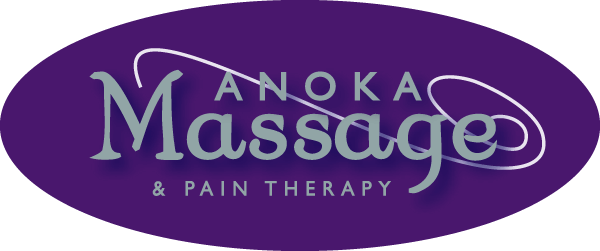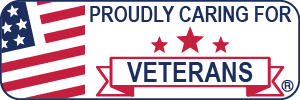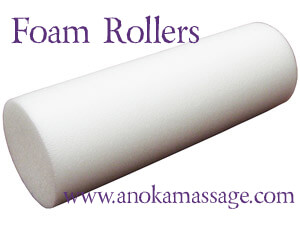
Foam Rollers are ideal for self-myofascial release. This helps to release muscle tightness or trigger points. By using the foam roller to apply pressure to specific points on your body, you are able to aid in the recovery of muscles and assist in returning them to normal function.
This pressure of the foam roller helps to relax tight muscles and break up adhesions formed between muscle layers and their surroundings. It also helps support normal blood flow to the area which, in turn, contributes to restoration of healthy tissue.
“If our muscles are not taken care of properly we can experience loss of flexibility, adhesions, and painful movement.”
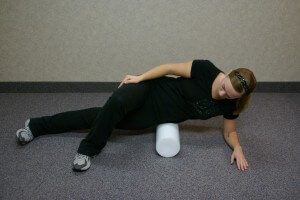 Our Massage Therapists are happy to help educate you on the use of foam rollers. We will share a brief overview here with you. To foam roll properly, apply moderate pressure to a specific muscle or muscle group using your bodyweight on the roller. Roll slowly between joints. Never roll directly on a joint or bone. Should you find areas that are tight or painful, pause for several seconds and relax as much as possible. The muscle should slowly start to releasing, and after a short time the discomfort or pain should lessen. If an area is too painful to apply direct pressure, shift the roller and apply pressure on the surrounding area and gradually work to loosen the entire area. (To target muscles near bones, the low low back, or in small areas like the sole of the foot, you can use tennis balls to roll the muscles. ) The goal is to restore healthy muscles – it is not a pain tolerance test.
Our Massage Therapists are happy to help educate you on the use of foam rollers. We will share a brief overview here with you. To foam roll properly, apply moderate pressure to a specific muscle or muscle group using your bodyweight on the roller. Roll slowly between joints. Never roll directly on a joint or bone. Should you find areas that are tight or painful, pause for several seconds and relax as much as possible. The muscle should slowly start to releasing, and after a short time the discomfort or pain should lessen. If an area is too painful to apply direct pressure, shift the roller and apply pressure on the surrounding area and gradually work to loosen the entire area. (To target muscles near bones, the low low back, or in small areas like the sole of the foot, you can use tennis balls to roll the muscles. ) The goal is to restore healthy muscles – it is not a pain tolerance test.
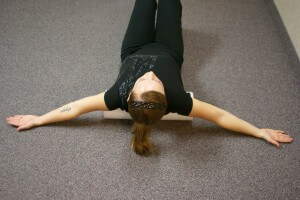
Following a self-myofascial release session, you may be sore. It should feel as if your muscles have been worked, however you should not push yourself to the point of pain or excessive soreness. Drink plenty of water, get enough sleep, and eat clean. This will help to flush your system and fuel your muscles more effectively. Give it 24-48 hours before focusing on the same area again.
